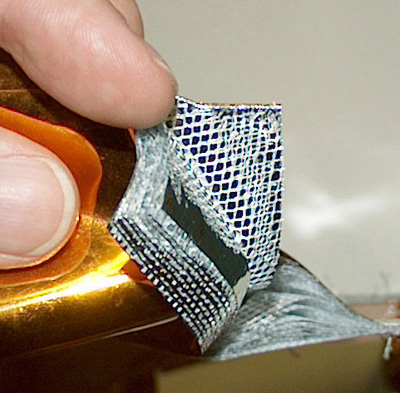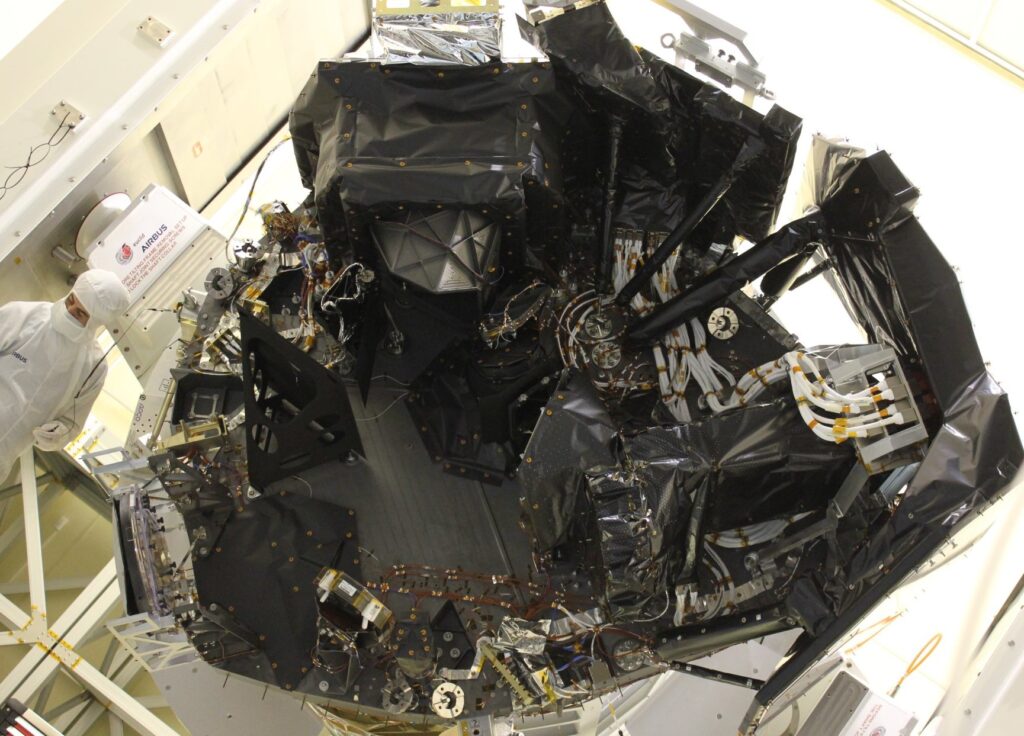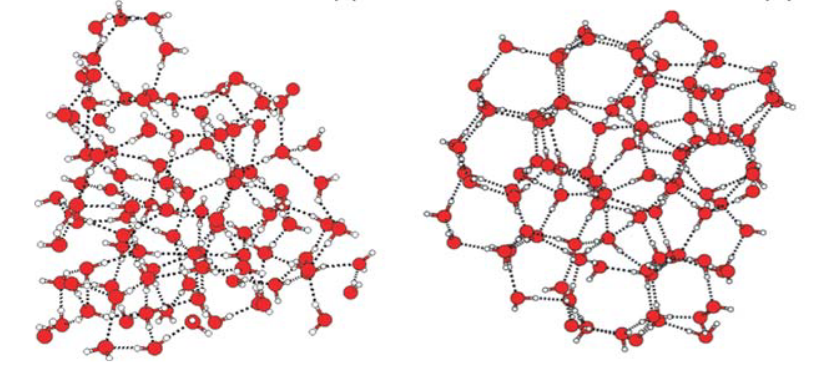As we have described before, there is humidity – water – in every spacecraft. And this humidity will turn to ice in the cold and vacuum of space. Euclid is no exception to this. If this humidity collects on optical surfaces like mirrors, it will affect the optical performance of a space telescope. For this reason Euclid will undergo a second targeted de-icing process over the next days.
Euclid’s instrument bay is mostly light-tight, meaning there are just very defined openings to lead the scientific light beam towards Euclid’s instruments (with an exception). It’s not hermetically sealed, because the ambient air before launch needed to escape, so the light-tight sealing facilitated by so-called ‘multi-layer insulation’ (MLI), several layers of tinted aluminised plastic foil. This foil has small holes in it for air to escape, and several layers on top of each other make sure that these holes don’t align and let sunlight pass inside.

Multi-layer insulation as used in spacecraft. Coloured aluminised plastic foils are layered with a mesh material in between to avoid direct thermal conduction. Image credit: John Rossie of Aerospace Educational Development Program (AEDP), CC BY-SA 2.5 license.
But what keeps out light also almost as efficiently keeps in freely floating water molecules. Where light would have to have many reflections between these foil layers to enter, so would a water molecule need multiple bounces off the foil surface without sticking to it to actually leave the instrument cavity. Additional MLI packaging even exists inside the cavity, where the NISP instrument is wrapped again as are certain parts of mirror assemblies.
The flight-hardware instrument cavity. Evident are the large amounts of MLI, specifically the carbon-charged black Kapton that shield NISP (lower right) and numerous structural components. The orange-brown anti-static tapes are made
from uncoated Kapton and are omnipresent. Kapton and MLI form primary water reservoirs. Copyright: Airbus Defence and Space – Toulouse. From Euclid Consortium: Schirmer et al. 2023, reproduced under CC-BY 4.0 license.

This means that most of the water that is inside Euclid’s instrument bay will stay there for a long time. What it can do over time is change its location: different surfaces inside Euclid have different temperatures and ice tendentially sublimates (direct transition from solid ice to gaseous water) off warmer surfaces like the VIS detectors, and has a tendency to build up on colder surfaces as some of the in-between mirrors. And then there are a lot of surfaces where ice wouldn’t have any effect whatsoever, like mechanical structures or the MLI surface itself. To predict where ice will actually build up and how fast is challenging and actually not an exact science as ice in vacuum is more complex than just our ice cubes to cool drinks or as the snow that we know – as one of the Euclid preparation science papers showed.

Typical structure of high-density (left) and low-density (right) amorphous ice. Red dots represent the oxygen atoms, and small white circles the hydrogen atoms. Hydrogen bonds are indicated by dashed lines. Coherent structures are absent. From Euclid Consortium: Schirmer et al. 2023, reproduced under CC-BY 4.0 license.
What is clear is that at some point there was too much ice on one of Euclid’s intermediate mirrors and a brief warm-up successfully removed it. But, as said above, it will not leave the spacecraft and over the past weeks some of the ice has come back. So now a second short de-icing campaign will start to remove it again. This was actually expected before launch: ice would build up and would need a periodic removal by warming up Euclid. This second campaing, as the first one, is again the mildest version of de-icing, just warming up one mirror by about 35°C to just below -110°C. Then there will be some wait time for the temperatures to go back to as it was before, followed by renewed calibration data being observed. Overall this procedure will take about 1 week after which Euclid will continue its scientific surveys.


